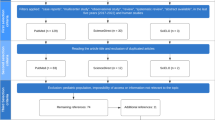Abstract
Reversible cerebral vasoconstriction syndrome (RCVS) is a collective term used for transient noninflammatory, nonatherosclerotic segmental constriction of cerebral arteries. The angiopathies of RCVS have previously been defined by several nomenclatures. Current opinion favors the unification of these pathophysiologically related angiopathies because of their similar angiographic features and clinical course. RCVS typically presents acutely as headache, delirium, seizure, cerebral ischemia, and/or hemorrhage. The angiographic features make RCVS an important mimic of CNS vasculitides. In contrast to CNS vasculitis, RCVS is typically a transient condition with relatively good clinical outcomes. Although a complete understanding of the etiological and pathological features of RCVS has not yet been achieved, alterations in vascular tone lead to the observed arterial changes. In this review, we aim to provide a summary of RCVS and provide insight into current perspectives of the underlying pathophysiological processes, diagnosis, and treatment.

Similar content being viewed by others
References
Papers of particular interest, published recently, have been highlighted as: • Of importance •• Of major importance
Call GK, Fleming MC, Sealfon S, et al. Reversible cerebral segmental vasoconstriction. Stroke. 1988;19:1159–70.
Chen SP, Fuh JL, Lirng JF, et al. Recurrent primary thunderclap headache and benign CNS angiopathy: spectra of the same disorder? Neurology. 2006;67:2164–9.
Ducros A, Boukobza M, Porcher R, et al. The clinical and radiological spectrum of reversible cerebral vasoconstriction syndrome. A prospective series of 67 patients. Brain. 2007;130:3091–101.
•• Singhal AB, Hajj-Ali RA, Topcuoglu MA, et al. Reversible cerebral vasoconstriction syndromes: analysis of 139 cases. Arch Neurol. 2011;68:1005–12. Describe the features of RCVS in patients requiring hospitalization. In addition to the clinical features of 139 cases, the authors discuss RCVS treatment and outcome.
• Chen SP, Fuh JL, Wang SJ. Reversible cerebral vasoconstriction syndrome: current and future perspectives. Expert Rev Neurother. 2011;11:1265–76. Provide a comprehensive review of RCVS based on their experience with a large cohort of patients presenting to an outpatient headache center.
Marder CP, Donohue MM, Weinstein JR, Fink KR. Multimodal imaging of reversible cerebral vasoconstriction syndrome: a series of 6 cases. AJNR Am J Neuroradiol. 2012;33:1403–11.
Williams TL, Lukovits TG, Harris BT, Harker Rhodes C. A fatal case of postpartum cerebral angiopathy with literature review. Arch Gynecol Obstet. 2007;275:67–77.
Thakur JD, Chittiboina P, Khan IS, Nanda A. Unique case of postpartum cerebral angiopathy requiring surgical intervention: case report and review of literature. Neurol India. 2011;59:891–4.
Levine RJ, Maynard SE, Qian C, et al. Circulating angiogenic factors and the risk of preeclampsia. N Engl J Med. 2004;350:672–83.
Levine RJ, Lam C, Qian C, et al. Soluble endoglin and other circulating antiangiogenic factors in preeclampsia. N Engl J Med. 2006;355:992–1005.
McKinney JS, Messe SR, Pukenas BA, et al. Intracranial vertebrobasilar artery dissection associated with postpartum angiopathy. Stroke Res Treat. 2010;2010:320627.
Macgregor EA, Rosenberg JD, Kurth T. Sex-related differences in epidemiological and clinic-based headache studies. Headache. 2011;51:843–59.
Chen SP, Fuh JL, Wang SJ, et al. Brain-derived neurotrophic factor gene Val66Met polymorphism modulates reversible cerebral vasoconstriction syndromes. PLoS One. 2011;6:e18024.
Palma JA, Fontes-Villalba A, Irimia P, et al. Reversible cerebral vasoconstriction syndrome induced by adrenaline. Cephalalgia. 2012;32:500–4.
Schellinger PD, Bryan RN, Caplan LR, et al. Evidence-based guideline: the role of diffusion and perfusion MRI for the diagnosis of acute ischemic stroke: report of the Therapeutics and Technology Assessment Subcommittee of the American Academy of Neurology. Neurology. 2010;75:177–85.
Calabrese LH, Dodick DW, Schwedt TJ, Singhal AB. Narrative review: reversible cerebral vasoconstriction syndromes. Ann Intern Med. 2007;146:34–44.
Lu SR, Liao YC, Fuh JL, et al. Nimodipine for treatment of primary thunderclap headache. Neurology. 2004;62:1414–6.
Ducros A, Fiedler U, Porcher R, et al. Hemorrhagic manifestations of reversible cerebral vasoconstriction syndrome: frequency, features, and risk factors. Stroke. 2010;41:2505–11.
Elstner M, Linn J, Muller-Schunk S, Straube A. Reversible cerebral vasoconstriction syndrome: a complicated clinical course treated with intra-arterial application of nimodipine. Cephalalgia. 2009;29:677–82.
Theeler BJ, Krasnokutsky MV, Scott BR. Exertional reversible cerebral vasoconstriction responsive to verapamil. Neurol Sci. 2010;31:773–5.
Chik Y, Hoesch RE, Lazaridis C, et al. A case of postpartum cerebral angiopathy with subarachnoid hemorrhage. Nat Rev Neurol. 2009;5:512–6.
Grande PO, Lundgren A, Bjartmarz H, Cronqvist M. Segmental cerebral vasoconstriction: successful treatment of secondary cerebral ischaemia with intravenous prostacyclin. Cephalalgia. 2010;30:890–5.
Farid H, Tatum JK, Wong C, et al. Reversible cerebral vasoconstriction syndrome: treatment with combined intra-arterial verapamil infusion and intracranial angioplasty. AJNR Am J Neuroradiol. 2011;32:E184–187.
Bouchard M, Verreault S, Gariepy JL, Dupre N. Intra-arterial milrinone for reversible cerebral vasoconstriction syndrome. Headache. 2009;49:142–5.
Takis C, Kwan ES, Pessin MS, et al. Intracranial angioplasty: experience and complications. AJNR Am J Neuroradiol. 1997;18:1661–8.
Singhal AB, Kimberly WT, Schaefer PW, Hedley-Whyte ET. Case records of the Massachusetts General Hospital. Case 8-2009. A 36-year-old woman with headache, hypertension, and seizure 2 weeks post partum. N Engl J Med. 2009;360:1126–37.
Disclosure
No potential conflicts of interest relevant to this article were reported.
Author information
Authors and Affiliations
Corresponding author
Additional information
This article is part of the Topical Collection on Stroke
Rights and permissions
About this article
Cite this article
Velez, A., McKinney, J.S. Reversible Cerebral Vasoconstriction Syndrome: A Review of Recent Research. Curr Neurol Neurosci Rep 13, 319 (2013). https://doi.org/10.1007/s11910-012-0319-y
Published:
DOI: https://doi.org/10.1007/s11910-012-0319-y




